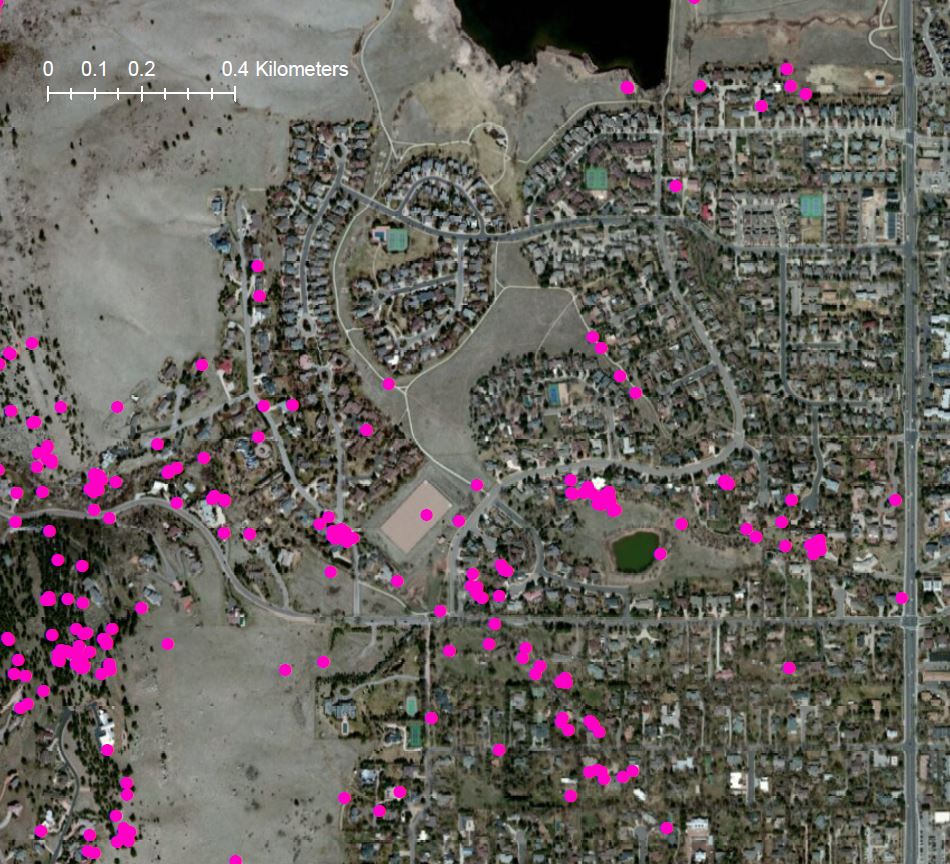The mountain lion (Puma concolor) is the most widely distributed mammal in North America and an ecologically important top predator. As both human and mountain lion populations expand, mountain lions are increasingly encountering anthropogenically modified landscapes, and are subject to high risk of conflict in these habitats. But, as with many other large carnivores, the behavior and adaptability of mountain lions in these novel habitats is poorly understood.

Pink dots represent female AF69’s locations over the course of a few months. What was this individual doing in downtown Boulder? We use GPS data to examine how mountain lions use urban areas, and what effect it may have on their diet and risk of conflict.
Our project investigates how mountain lions are responding to anthropogenically modified habitats. In collaboration with Dr. Mat Alldredge at Colorado Parks & Wildlife, we are tracking mountain lions in the Front Range of Colorado, a rapidly growing urban-wildland interface. Using spatial data, stable isotope analysis, and survival data, we are examining where mountain lions forage, what they consume, and how this behavior affects their risk of mortality. We are also interested in how mountain lion diet has changed as humans have modified prey community composition; that is, how urban mountain lions differ from rural ones, and how this change has occurred over time. Thus far, our study shows that mountain lions in urban areas rely more heavily on smaller-bodied prey, like mesocarnivores and domestic pets, indicating mountain lion niche is shifting along with land use change.
Our study aims to develop better techniques to non-invasively monitor mountain lions, as well as to provide insight on human-carnivore conflict, and how changes in carnivore behavior either exacerbate or mitigate it.
This work is funded by Colorado Parks & Wildlife.
